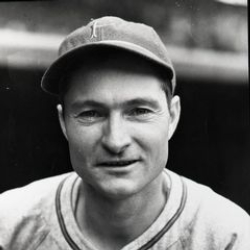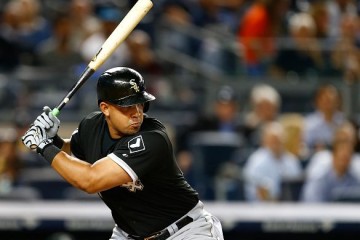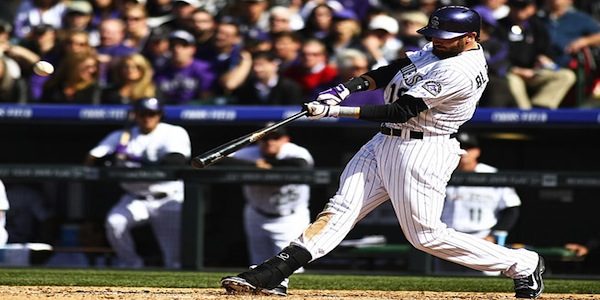The Hall of Fame Index: Who is the least qualified center fielder in the Hall of Fame?

We see a number of different fallacies at play when we look at the center field group of Veterans Committee selections. The two biggest ones are the notion of the magical season and the dying embers that is batting average. Of course, we are getting ahead of ourselves. The Hall of Fame Index Part II looks at all of these things for players selected by the BBWAA and those on the outside looking in. I didn’t cover the Veterans Committee selections.
What we are doing here is looking for the least qualified player in the Hall of Fame. Most people would call those mistakes and that’s perfectly fair. Throughout this series, we have established 300 index wins as a kind of benchmark. As benchmarks go, there are always exceptions. We go through multiple tests to determine whether someone that falls below that is a credible exception. In some cases, we even look beyond the numbers at the history involved.
The index creates gaps. Those gaps occur because we use three different sources in a career value and peak value format. So, it isn’t so much there to rate one player as better than another but to find those gaps. So, the index itself doesn’t say who is in and who is out. It clears the picture to allow everyone to make their own philosophical judgment.
Career Value
| BWAR | FWAR | WS/5 | Total | |
| Billy Hamilton | 63.3 | 70.3 | 67.4 | 201.0 |
| Richie Ashburn | 64.4 | 57.4 | 65.8 | 187.6 |
| Edd Roush | 45.1 | 49.6 | 62.8 | 157.5 |
| Earl Averill | 51.1 | 47.9 | 56.0 | 155.0 |
| Larry Doby | 49.3 | 51.1 | 53.6 | 154.0 |
| Hugh Duffy | 43.6 | 48.3 | 59.0 | 150.9 |
| Earle Combs | 43.9 | 41.3 | 45.4 | 130.6 |
| Hack Wilson | 38.2 | 42.1 | 44.8 | 125.1 |
| Lloyd Waner | 27.9 | 25.0 | 49.0 | 101.9 |
Obviously, Waner got off to a rough start that he’s not likely to recover from. There has never been a significant player in history to have a higher peak value than a career value. It is theoretically possible though. So, we ask why Waner is in the Hall of Fame? The answer is simple. He had a lifetime .316 batting average. That kind of sum seems unthinkable these days with extreme shifting and launch angles. Then again, that’s the whole point.
Without even acknowledging the problems of focusing on a single number like batting average we must acknowledge the problem with taking a single number out of context. That mark netted him zero batting titles because everyone and his brother was hitting .300. In the year when he hit .362, the average batting average in the NL was .303. Again, we are ignoring the problems with batting average because we will get to the offensive numbers soon enough.
Peak Value
| BWAR | FWAR | WS/5 | Total | Index | |
| Hamilton | 53.6 | 59.7 | 56.0 | 169.3 | 370.3 |
| Ashburn | 54.5 | 48.8 | 50.8 | 154.1 | 341.7 |
| Averill | 50.9 | 47.8 | 53.6 | 152.3 | 307.3 |
| Doby | 49.0 | 50.9 | 51.4 | 151.3 | 305.3 |
| Duffy | 39.0 | 43.2 | 50.2 | 132.4 | 283.3 |
| Roush | 38.0 | 39.5 | 47.4 | 124.9 | 282.9 |
| Combs | 42.8 | 40.2 | 43.4 | 126.4 | 257.0 |
| Wilson | 37.6 | 41.4 | 43.6 | 122.6 | 247.7 |
| Waner | 22.8 | 21.3 | 37.4 | 81.5 | 183.4 |
We know about Waner, but the index results indicate that Combs and Wilson are also deficient. Yet, they are deficient for different reasons. Combs played a prominent role on the Murder’s Row Yankees. There are those that consider the 1927 Yankees to be the greatest team ever assembled. Rob Neyer and Eddie Epstein’s book (Baseball’s Dynasties: The Greatest Teams of All-time) came up with a different answer. It’s a terrific book, so I’ll let you find out their answer on your own.
Combs hit .356 and scored 137 runs that season. He made it four Hall of Famers in the regular lineup. As we saw with Tony Lazzeri in the second base article, sometimes their index numbers are less impressive. Combs scored 100 or more runs eight years in a row. The question is whether he would have done that in any other lineup in the history of baseball. As for Wilson, he drove in 191 runs in 1930. That’s a tremendous sum and a tremendous season in any era. Still, 1930 is the single best year of offense from the 20th century.
Offensive Numbers
| OPS+ | Rbaser | OW% | wOBA | |
| Wilson | 144 | 0 | .715 | .421 |
| Hamilton | 141 | 53 | .731 | .433 |
| Doby | 136 | 15 | .679 | .396 |
| Averill | 133 | 14 | .691 | .417 |
| Roush | 126 | -13 | .648 | .380 |
| Combs | 125 | 9 | .651 | .395 |
| Duffy | 123 | 18 | .670 | .394 |
| Ashburn | 111 | 8 | .615 | .362 |
| Waner | 99 | 12 | .560 | .346 |
If we focus on our three guys we see three different situations. Waner obviously doesn’t fit and we see why. When we look at more comprehensive numbers that distill out the effects of time and place we see that Waner was more or less average over the course of his career. Now, it’s possible he was an all-world defender, but judging by the index we would tend to doubt it.
Combs and Wilson look good when evaluating these numbers. However, these numbers never tell you how long someone was effective for. In the case of both players it was ten seasons or less. Wilson drank himself into an early death and likely into an early retirement. Comhs didn’t become a regular until he was 26. He had two brilliant seasons in the American Association where he dominated. Would those have been seasons in the big leagues? Possibly.
Fielding Numbers
| Rfield | DWAR | TZOF | DWS | |
| Ashburn | 77 | 5.4 | 77 | 14.8 |
| Duffy | 67 | -2.5 | 68 | 11.9 |
| Hamilton | 30 | -5.2 | 30 | 9.8 |
| Waner | 17 | -2.1 | 17 | 13.8 |
| Doby | 13 | -0.1 | 21 | 9.2 |
| Combs | 6 | -2.8 | 6 | 6.4 |
| Roush | -6 | -6.1 | -6 | 11.6 |
| Averill | -32 | -5.3 | -32 | 10.9 |
| Wilson | -33 | -7.2 | -32 | 5.8 |
Ashburn is generally regarded as one of the best centerfielders of all-time defensively, but the metrics are actually divided on that. He was -25 runs according to Rfield in his last four seasons. They say speed is the first thing to go. I can’t remember the second. We left Waner as an average offensive player. He was a little better than average defensively, but that isn’t nearly good enough to completely explain off the lackluster numbers
Worse yet, Wilson comes off as below average defensively. In a ten season career, -33 runs amounts to about -3 per season. However, the defensive win shares divided by five tell the story. Ashburn was nine wins better defensively. That helps explain how someone that was merely good offensively could end up being more valuable overall.
BWAR MVP Points
| Top 10 | Top 5 | MVP | Points | |
| Hamilton | 5 | 1 | 2 | 40 |
| Doby | 3 | 3 | 1 | 34 |
| Ashburn | 4 | 3 | 0 | 27 |
| Wilson | 1 | 4 | 0 | 23 |
| Averill | 2 | 3 | 0 | 21 |
| Roush | 3 | 2 | 0 | 19 |
| Combs | 3 | 1 | 0 | 14 |
| Duffy | 1 | 2 | 0 | 13 |
| Waner | 1 | 0 | 0 | 3 |
Waner is obviously the weak link here. Do you have to have a top five finish in the MVP voting to be a Hall of Famer? I suppose there is a chance you could be merely good for 20 years, but that’s just not the case in Waner’s situation. Usually, the BWAR MVP points are an indication and sometimes they aren’t. You have to take each test in concert to get a total picture. Combs and Wilson look okay here relatively, but when taken in concert with the totals you can see why they are deficient.
They just didn’t do it long enough. Between the two, Combs might have been more sympathetic. If he had two full seasons at the front end he might have added 25 index wins to his career value. That could have been enough. Wilson simply didn’t take care of himself and if you had a list of what if propositions he would just slot in somewhere.





